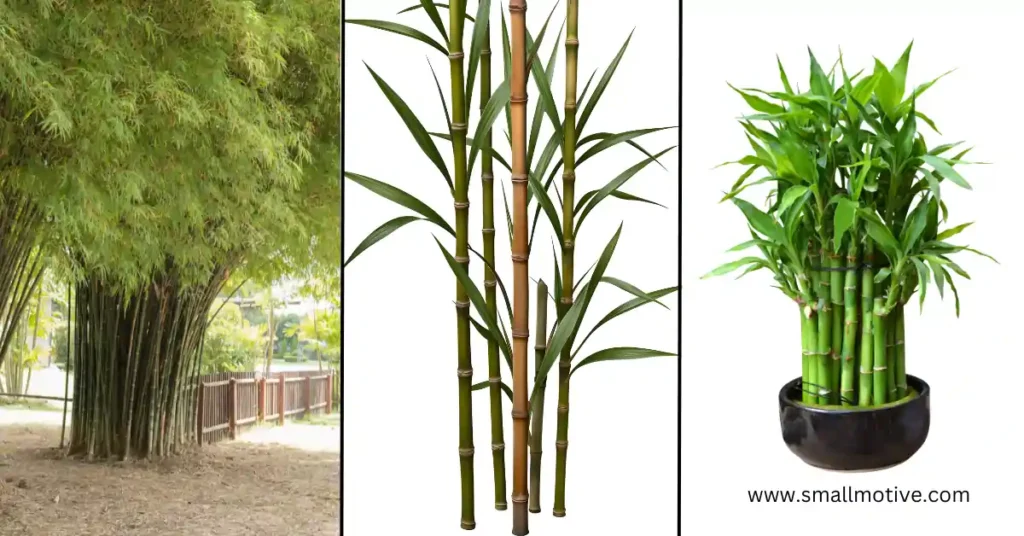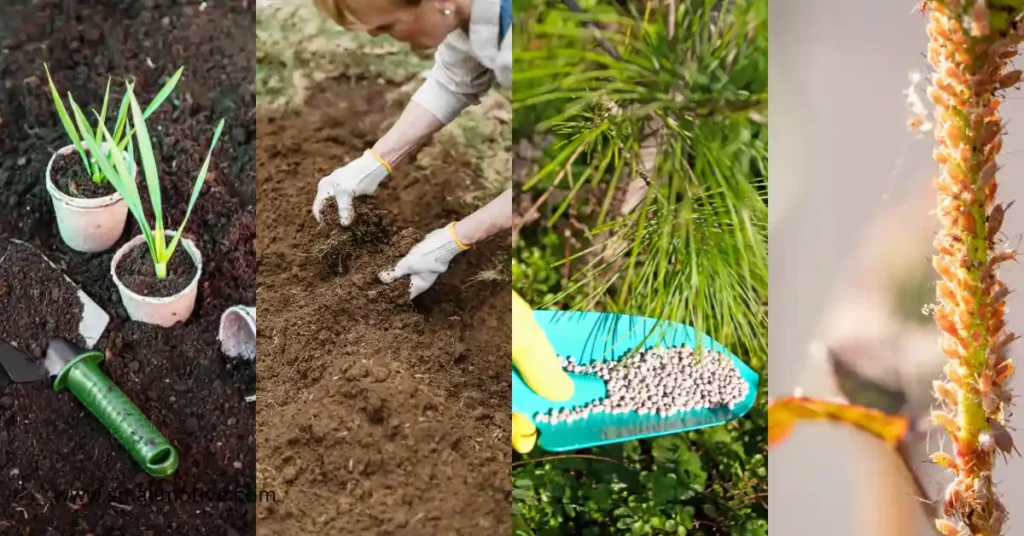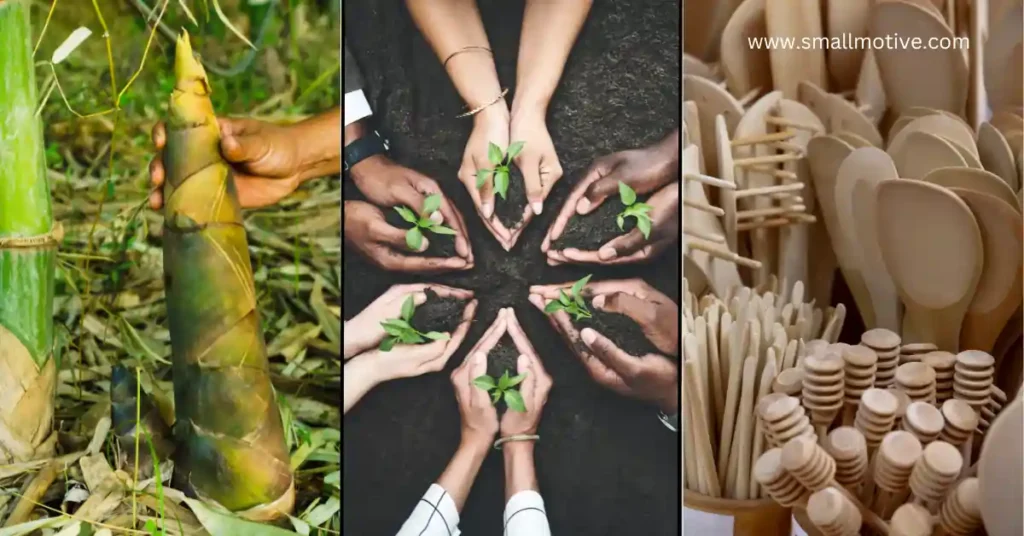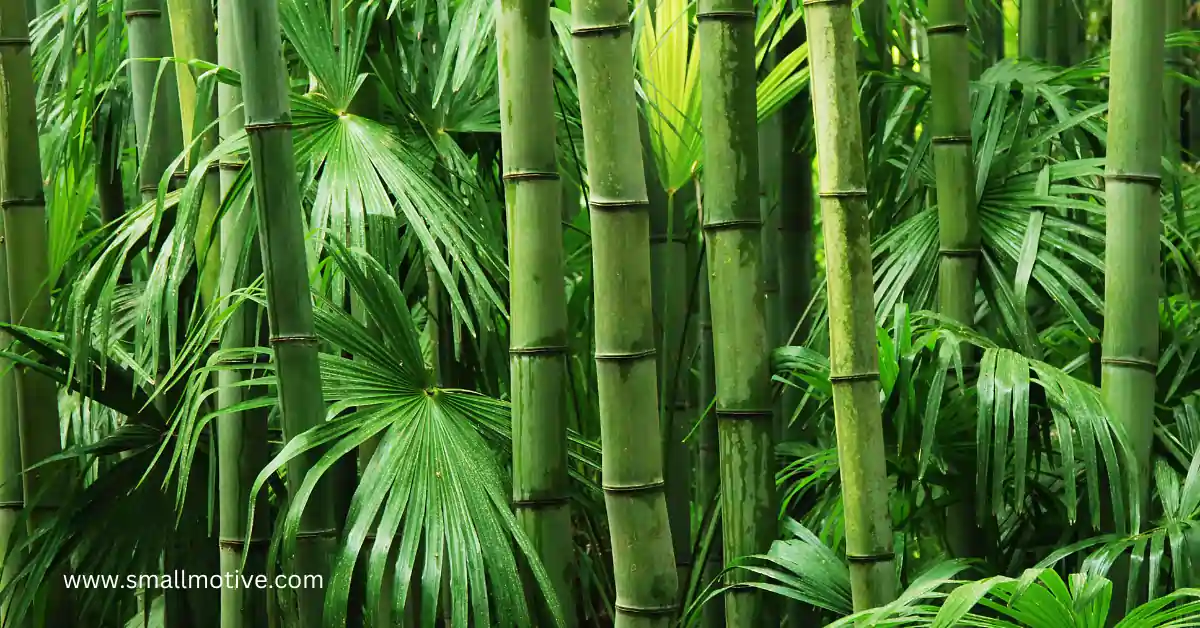Types of Bamboo Plants
Bamboo plants, with their graceful appearance and versatility, have earned a special place in gardens, landscapes, and even in various industries. Understanding the different types of bamboo plants is crucial for selecting the right variety for your needs and ensuring successful cultivation.
1. Clumping Bamboo
Clumping bamboo, also known as sympodial bamboo, is characterized by its non-invasive growth habit. Unlike running bamboo, clumping bamboo stays in tight clumps, making it a popular choice for landscaping.
1.1 Characteristics of Clumping Bamboo
Clumping bamboo tends to grow in clusters, with new shoots emerging close to the parent plant. This type of bamboo spreads slowly and is easier to control than its running counterpart. Clumping bamboo species often feature thicker culms (stems) and are known for their ornamental value.
1.2 Best Growing Conditions for Clumping Bamboo
Clumping bamboo thrives in a variety of climates, from tropical to temperate regions. They prefer well-drained soil with regular watering and partial shade. Providing adequate space for the clumps to expand ensures healthy growth.
2. Running Bamboo
Running bamboo, also referred to as monopodial bamboo, is known for its aggressive growth habit. Unlike clumping bamboo, running bamboo spreads rapidly through underground rhizomes, which can lead to its invasive nature.
2.1 Characteristics of Running Bamboo
Running bamboo species send out long rhizomes underground, allowing them to spread quickly and colonize new areas. This type of bamboo often has thinner culms and tends to form dense thickets if not properly contained. While running bamboo can be challenging to manage, it offers excellent screening and privacy when grown in the right conditions.
2.2 Best Growing Conditions for Running Bamboo
Running bamboo prefers warm, humid climates with ample rainfall. It thrives in fertile, well-drained soil and full to partial sun. To prevent its invasive spread, installing barriers or regularly pruning the rhizomes is essential.
3. Dwarf Bamboo
Dwarf bamboo, as the name suggests, is a smaller and more compact variety of bamboo. While it may lack the towering presence of other bamboo species, it offers unique ornamental value and is suitable for smaller spaces.
3.1 Characteristics of Dwarf Bamboo
Dwarf bamboo typically grows to a height of 1 to 5 feet, making it an ideal choice for borders, rock gardens, and containers. Despite its diminutive size, dwarf bamboo retains many of the distinctive features of larger bamboo plants, including slender culms and delicate foliage.
3.1 Best Growing Conditions for Dwarf Bamboo
Dwarf bamboo thrives in similar conditions to its larger counterparts but is more tolerant of colder temperatures and drier soils. It prefers well-drained soil with consistent moisture and can tolerate partial shade. Regular pruning helps maintain its compact size and shape.

Choosing the Right Bamboo Plant
When selecting bamboo plants for your garden or landscape, consider factors such as growth habits, climate suitability, and space availability. Clumping bamboo is ideal for controlled growth and ornamental purposes while running bamboo provides fast-growing privacy screens. Dwarf bamboo is perfect for small gardens or container cultivation, adding a touch of elegance to any space.
Assessing your growing conditions and understanding the maintenance requirements of different bamboo varieties will help you make an informed decision. Whether you’re aiming for a lush bamboo forest or a subtle accent, choosing the right bamboo plant ensures a successful and rewarding gardening experience.
Tips for Growing Bamboo Plants
Successful cultivation of bamboo plants requires careful attention to growing conditions and maintenance practices. Here are some tips to help you grow healthy and vibrant bamboo:
1. Selecting the Right Location
Choose a site with adequate sunlight and protection from strong winds. Consider the mature size of the bamboo plant and allow sufficient space for growth.
2. Soil Preparation
Get the soil ready by mixing in organic material and making sure it drains well. Bamboo plants prefer slightly acidic soil with a pH range of 6.0 to 6.5.
3. Watering and Fertilizing
Water bamboo regularly, especially during dry periods, to keep the soil evenly moist. In the springtime, use a fertilizer that’s balanced to help your plants grow strong and healthy.
4. Controlling Spread
For running bamboo species, install root barriers or use regular rhizome pruning to prevent invasive spread. Monitor the growth of clumping bamboo to maintain the desired clump size.

Common Bamboo Plant Pests and Diseases
While bamboo plants are generally resilient, they may encounter pests and diseases that can affect their health and appearance. Implementing proper pest control measures and disease prevention strategies is essential for maintaining thriving bamboo plants.
1. Pest Control Measures
Inspect bamboo plants regularly for signs of pest infestation, such as yellowing foliage or distorted growth. Treat affected plants with insecticidal soap or neem oil to control pests like aphids, mites, and bamboo borers.
2. Disease Prevention and Treatment
Prevent fungal diseases such as powdery mildew and bamboo rust by providing good air circulation and avoiding overhead watering. Prune infected foliage and apply fungicidal sprays to prevent the spread of disease.
Harvesting and Utilizing Bamboo
Harvesting bamboo can be a sustainable and rewarding endeavor, providing raw material for various crafts, construction, and culinary purposes. Knowing when and how to harvest bamboo ensures optimal quality and sustainability.
1. When to Harvest Bamboo
Harvest bamboo culms when they reach maturity, typically between 3 to 5 years old. Cut culms at ground level using sharp pruning shears or a saw during the dry season for best results.
2. Sustainable Harvesting Practices
Practice selective harvesting to maintain the health and integrity of bamboo stands. Replant harvested areas with new bamboo shoots to replenish the supply and support ecosystem balance.
3. Various Uses of Harvested Bamboo
Harvested bamboo culms can be used for a wide range of purposes, including construction, furniture making, basketry, and culinary applications. Bamboo shoots are also prized for their culinary versatility, adding flavor and texture to various dishes.

Conclusion
Bamboo plants offer a wealth of diversity and utility, making them valuable additions to gardens, landscapes, and sustainable ecosystems. Understanding the different types of bamboo plants and their unique characteristics empowers gardeners and enthusiasts to select the right variety for their specific needs and preferences. With proper care and maintenance, bamboo plants thrive and contribute to the beauty and functionality of outdoor spaces.
Unique FAQs
1. Q: Can bamboo plants survive in cold climates?
A: While many bamboo species prefer warm, tropical climates, some varieties are cold-hardy and can tolerate freezing temperatures with proper care and protection.
2. Q: How fast do bamboo plants grow?
A: The growth rate of bamboo plants varies depending on the species and growing conditions. Some bamboo species can grow several feet in a single growing season, while others may take several years to reach maturity.
3. Q: Are bamboo plants invasive?
A: Certain types of bamboo, particularly running bamboo species, have invasive tendencies and can spread rapidly if not properly contained. Clumping bamboo, on the other hand, stays in tight clumps and is less invasive.
4. Q: Can I grow bamboo in containers?
A: Yes, many bamboo species can be grown in containers, making them suitable for small gardens, patios, and balconies. Choose dwarf bamboo varieties for container cultivation and provide adequate space and drainage.
5. Q: How do I prevent bamboo from spreading uncontrollably?
A: To prevent bamboo from spreading uncontrollably, install root barriers around the planting area for running bamboo species. Regularly monitor and prune rhizomes to maintain desired growth boundaries.
